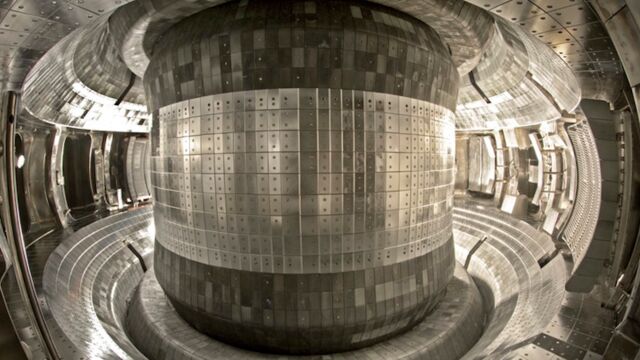A little under fifteen million degrees celsius is the temperature at the heart of our star, the Sun. A rather scorching atmosphere, but it would almost feel like a refrigerator compared to the ‘artificial sun’ researchers in China created that recently reached a record temperature of 100 million degrees Celsius.
Discover our latest podcast
This ‘artificial sun’ called EAST, for Experimental Advanced Superconducting Tokamak, is the work of China. Local scientists, supported by specialists from around the world, have been working since 2006 to design and build this ‘tokamak’, a Russian term for a magnetic confinement chamber in which a plasma is generated. The purpose of this type of installation: to master, one day, the scientific holy grail of nuclear fusion.
As they announced recently, scientists from the Hefei Institutes of Physical Science part of the Chinese Academy of Sciences (CASHIPS) and their colleagues have come closer to it, reaching this unprecedented temperature record of 100 million degrees and with a discharge pulse of 100 seconds.
A monstrous power
To achieve this, no less than 10 megawatts of electric power had been needed, as much as that which can be generated by three onshore wind turbines. A colossal energy that scientists have been able to control only at the cost of a clever control of the reactions involved in the installation.
In the Chinese ‘Tokamak’, it is indeed the magnetic fields induced by the displacement of the plasma injected into the chamber that maintains its movement. At its heart, it is a rather unstable reaction, but with a much higher temperature. As one of the world’s first achievements of its kind, this experiment therefore opens the way towards what many consider a clean and inexhaustible way of producing energy: nuclear fusion.
‘This is undoubtedly a significant step forward for China's nuclear fusion program and is a significant development for the world,’ commented ABC News Australia's Matthew Hole, assistant professor at Australian National University. ‘The benefit is simple in that it allows [continuous] energy production on a very large scale, with zero greenhouse gas emissions and no long-lived radioactive waste.’
A technology still in its infancy
Nevertheless, many obstacles still have to be overcome before reaching this goal. Quoted by the Xinhua News Agency, the specialist Zhang Tiankan pointed out that scientists should, if they wish to go further, raise the temperature to ‘hundreds of millions of degrees’ and extend ‘the pulse to thousands of seconds’. They will also have to improve the controllability of the reaction.
In addition to the technical challenge, the main obstacle to the development of this technology remains the ‘fuel’ necessary for its implementation: tritium. It is an isotope of hydrogen much less abundant on Earth than the nuclide with which it shares the same number of protons: 1 atom of tritium for 1018 atoms of hydrogen, as the French Nuclear Safety Authority (ASN) underlines in its book White Tritium, published in 2010. Not as easy to find as oil...
Although it moves at great speed, science still seems a few light-years away from lastingly surpassing our precious star, the Sun.















